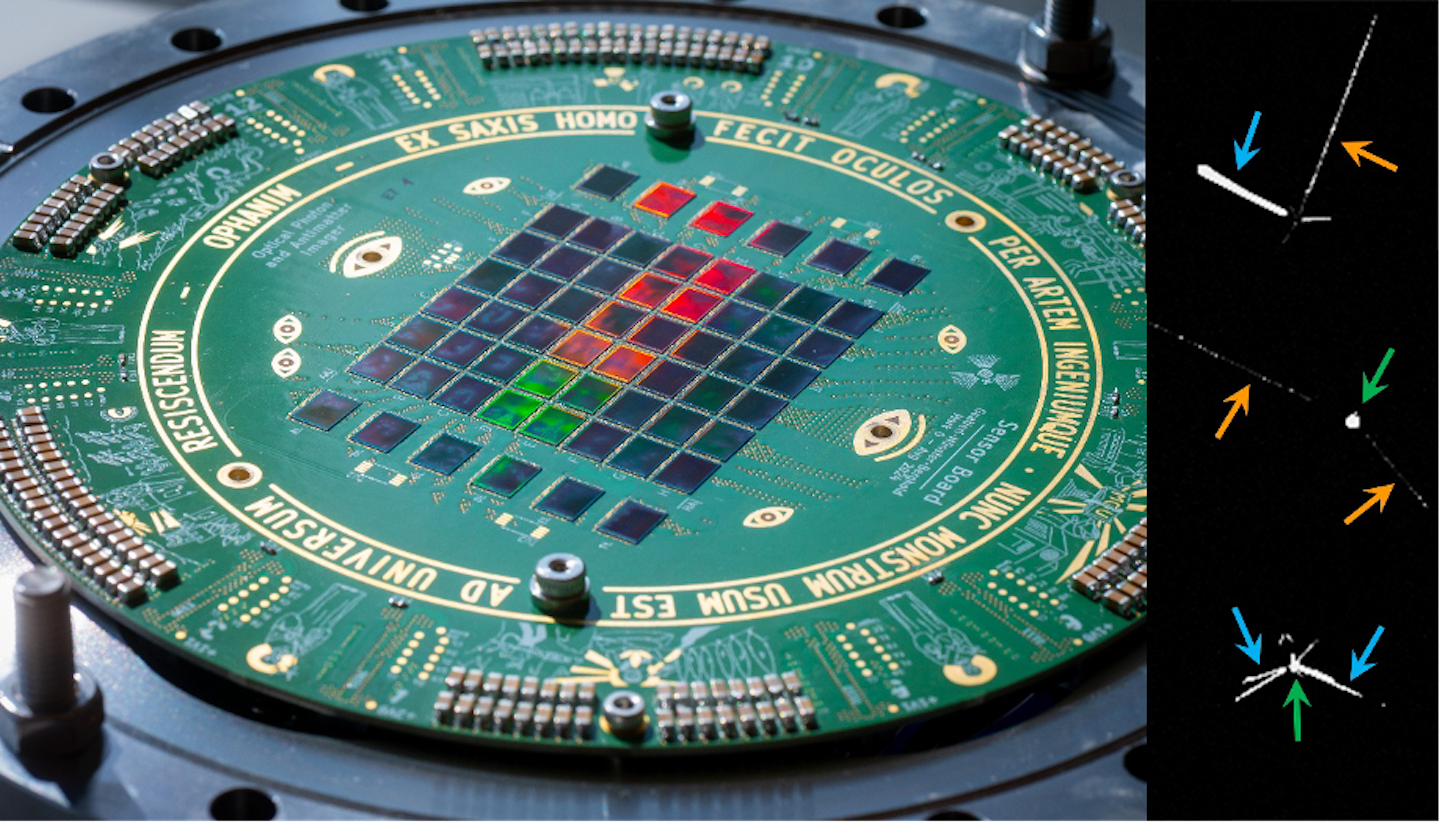Follow us on Google News (click on ☆)
The AEgIS collaboration, led by Christoph Hugenschmidt's team working at the FRM II neutron source at the Technical University of Munich, has developed a detector using a smartphone camera sensor, modified to capture real-time images of points where antimatter annihilates with matter.
This new device, described in a paper just published in Science Advances, can locate antiproton annihilations with a resolution of about 0.6 micrometers – 35 times higher resolution than existing real-time methods.

The new AEgIS detector (left) and a selection of antiproton annihilations it photographed (right).
Annihilations appear as star-shaped events with multiple tracks originating from a primary vertex. Green, cyan and orange arrows indicate examples of nuclear fragments.
Image: AEgIS/CERN
AEgIS and other experiments at CERN's antimatter factory, such as ALPHA and GBAR, aim to precisely measure antihydrogen's fall in Earth's gravitational field, each using different techniques.
AEgIS's approach involves producing a horizontal antihydrogen beam and measuring its vertical displacement using a moiré deflectometer (revealing tiny trajectory deviations) and a detector recording antihydrogen annihilation points.
"For AEgIS to work, we need a detector with extremely high spatial resolution – smartphone camera sensors have pixels smaller than one micrometer," explains Francesco Guatieri, the study's lead researcher. "Our detector contains 60 camera sensors, achieving 3,840 megapixel resolution. This makes it the highest pixel-count imaging detector to date."
"Photographic plates were previously the only option, but they didn't allow real-time work," adds Guatieri. "Our solution, tested with antiprotons and directly applied to antihydrogen, combines photographic-plate-level resolution, real-time diagnostics, self-calibration and good particle collection surface in one device."
The team used commercially available optical image sensors, whose ability to "photograph" low-energy positrons in real time with unprecedented resolution had already been demonstrated. "We had to remove the sensors' top layers, designed for advanced mobile phone electronics," explains Guatieri. "This required expertise in electronic design and micro-engineering."
This record resolution was achieved thanks to an unexpected key element: crowdsourcing. "We found human intuition currently outperforms automated methods," notes Guatieri. The AEgIS team asked colleagues to manually determine antiproton annihilation positions in over 2,500 detector images – this proved far more accurate than any algorithm. The only drawback: each colleague needed up to ten hours to review all annihilation events.
"The resolution even lets us distinguish fragments from different annihilation events," emphasizes Ruggero Caravita, AEgIS spokesperson. By measuring track widths of different annihilation products, researchers can determine whether tracks come from protons or pions.
"This detector opens new research avenues for low-energy antiparticle annihilation and represents breakthrough technology for observing gravity's tiny effects on antihydrogen," explains Caravita.